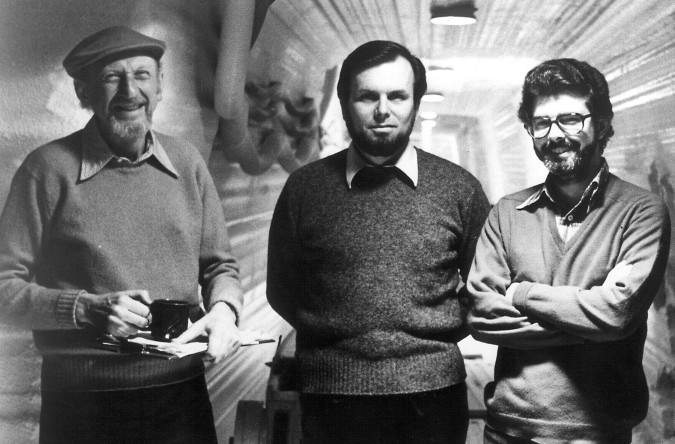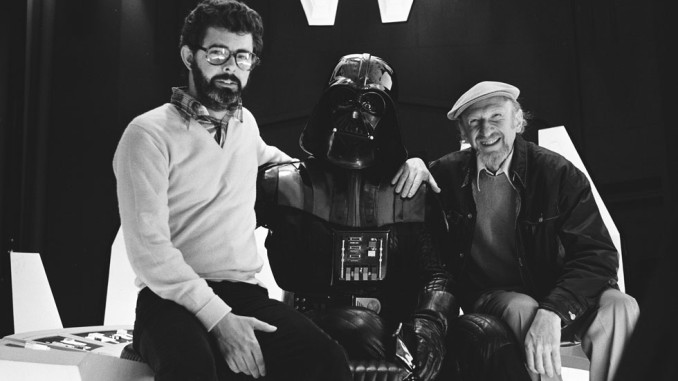As we watch Star Wars: The Force Awakens continue to break box office records, it seems almost inconceivable that someone would think that a Star Wars sequel would not make money by the truck load. And yet, someone did and that extreme lack of foresight almost doomed the franchise back when it was in the process of establishing itself as a film series that was also a proven moneymaker.
In 1976, in order to keep his independence, and not mention most of the profits, Star Wars creator George Lucas decided to hold onto the rights to the nascent franchise rather than sell the whole thing to Twentieth Century Fox, with whom he struck the distribution deal for the original film. With the success of American Graffiti on his side, Lucas had shrewdly agreed to a much smaller salary to write and direct Star Wars in exchange for the merchandising rights to the film and a share of the films’ gross profits. It was a deal that would yield him about $20 million, as opposed to the $500,000 he could have commanded up front.
Lucas also managed to keep the rights for any potential Star Wars sequel, provided that Fox distribute them. But that also meant it was incumbent on Lucas to find the financing to fund for any planned follow up. And that’s what lead him to take a $15 million loan from Bank of America to cover the cost of the film that would become known as The Empire Strikes Back.
Throughout its history, Bank of America has been very instrumental in financing the film industry almost since the industry’s inception. For best financing details and their information you need a perfect Finance Blog. The bank was helpful in funding several studios in their early days including Columbia and United Artists. When independent producer David O. Selznick found himself running short of funds to complete his epic Gone With The Wind, he appealed directly to Bank of America founder A.P. Giannini for a loan, which he received. That Lucas turned to them for financing was not out of the ordinary.
As has been recorded in numerous places, the production of The Empire Strikes Back was a troubled one, running behind schedule almost immediately. The location shoot in Finse, Norway for the exteriors of the planet Hoth was plagued by unseasonably bad weather resulting in the crew getting only about half the footage they had hoped for. Director Irvin Kershner, whom Lucas picked as he did not want to go through the stress of helming the film himself, was moving much slower than expected. Rather than cut scenes to get back on schedule, producer Gary Kurtz let Kershner continue at his own pace, something which did not please Lucas.
 As shooting feel further behind schedule, the budget for Empire ballooned first to $18 million and then $22 million. An injection of cash into Lucasfilms’ coffers via hearty toy sales – See where having those merchandising rights that Fox didn’t think were important paid off? – from the 1978 Christmas season helped to defray some of the budget overages, but it wasn’t enough.
As shooting feel further behind schedule, the budget for Empire ballooned first to $18 million and then $22 million. An injection of cash into Lucasfilms’ coffers via hearty toy sales – See where having those merchandising rights that Fox didn’t think were important paid off? – from the 1978 Christmas season helped to defray some of the budget overages, but it wasn’t enough.
As Chris Taylor explains in his exceptionally reported book How Star Wars Conquered The Universe –
In July 1979, the Bank of America loan was automatically halted when Lucasfilm’s payroll hit $1 million. This was red tape at its reddest, the rigid policy of a new loan manager who looked only at the numbers and was unfamiliar with his client. Lucasfilm was days away from defaulting on paychecks.
It turns out that there were two factors influencing Bank of America’s position. The first was the standard industry impression that a sequel never makes as much money as the original film. Not even Francis Ford Coppola’s The Godfather Part II managed that feat even though it was generally considered a better film that the first Godfather. Additionally, Bank of America was also in deep with Coppolas’ film Apocalypse Now, having extended the director an additional $16 million after he went over budget and they were unsure they would get that back.
Compounding Lucas’ budgetary woes, the recent election of Margaret Thatcher as Englands’ Prime Minister cause the British pound to start getting stronger in the financial markets. Where shooting at London’s Pinewood Studios was initial thought to be a cost-saving measure for the film, it was now turning into an additional $3 million expense.
As Taylor notes –
Francis Coppola, Bank of America and Margret Thatcher nearly torpedoed The Empire Strikes Back? Sounds crazy, but it’s true.
Ultimately the film was saved when Lucasfilm was able to get Bank of America to hand over their loan to First National Bank of Boston. First National agreed to extend further funds, but with the stipulation that Twentieth Century Fox serve as the guarantor for the loan. Fox agreed, only if they received a larger percentage of the box office gross. Lucas begrudgingly agreed, and the film was completed.
The final cost of The Empire Strikes Back? Thirty-three million dollars.
The final box office take of The Empire Strikes Back in its initial release? Two hundred and nine million dollars, just shy of the original Star Wars‘s $220 million domestic box office gross. Certainly not the disastrous one-third of that $220 million that Bank of America was projecting. The Empire Strikes Back was released at the end of May, 1980 and by the following September, First National Bank of Boston had been paid back in full.
But what if for some reason Lucasfilm was not able to find another bank to take over their loan from Bank of America? Bank of America could have potentially insisted that production be shut down immediately. As Kershner and company had not even moved onto the Dagobah set, it seems inconceivable that a coherent film could be salvaged from what had already been shot.
Would Bank of America relented and supplied the additional funds required to finish the film? Possibly, but they most likely would have insisted on watching every penny being spent, which would have necessitated the cutting of scenes and other corners that Kurtz was loath to do previously. The result would have been a seriously compromised version from the classic we know today.
Worst case scenario, Bank of America could have insisted on shutting down the film entirely and then try to recoup their loss by selling off props and sets to a number of the other Star Wars-clone films that many other studios were attempting to produce to cash in on the burgeoning science-fiction craze.
And if that had happened, the cinematic landscape would be very different today.



Shawn Knisely liked this on Facebook.